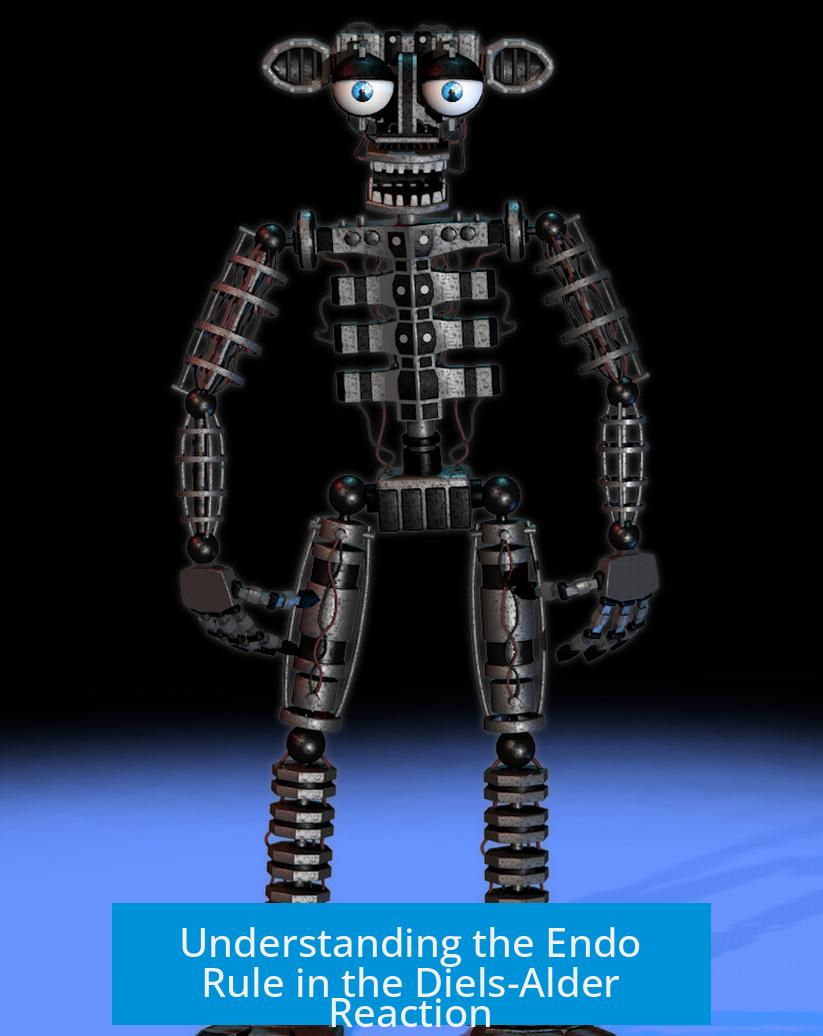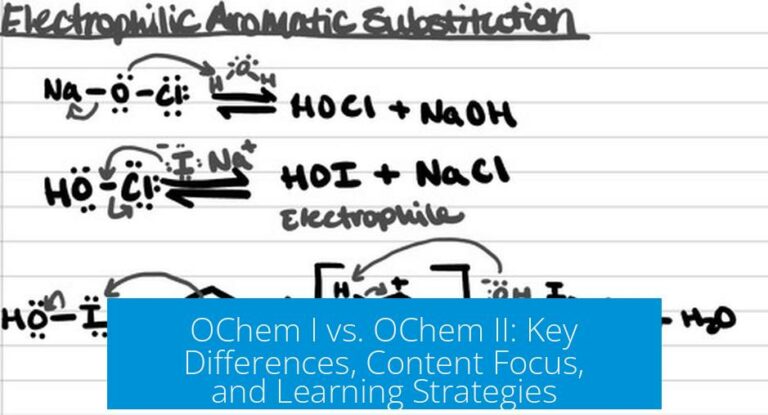Understanding the Endo Rule in the Diels-Alder Reaction

The Endo Rule describes the preferred orientation of the dienophile during the Diels-Alder reaction, where substituents with electron-withdrawing groups typically adopt a position underneath the forming ring, resulting in the favored endo stereoisomer. This concept clarifies why certain stereochemical outcomes dominate in these cycloaddition reactions. The preference arises due to orbital interactions and spatial alignment during the transition state of the reaction.
Basic Concept of Dienophile Orientation
The dienophile is generally a planar molecule presenting two faces toward the reacting diene. The stereochemical result depends on which face approaches the diene. One face is considered “up,” and the other “down,” relative to the reaction plane. The orientation of the dienophile strongly influences the product’s stereochemistry.
Typically, the dienophile has substituents such as carbonyl groups that affect this orientation. Identifying which face these groups favor during the reaction aids in predicting the major product.
Endo vs. Exo Products
When the dienophile contains electron-withdrawing groups like carbonyls, the Endo Rule states that these substituents preferentially point beneath the forming ring—toward the diene rather than away from it. This orientation leads to the “endo” product.
- Endo product: The substituent is oriented under or inside the newly formed bicyclic ring system.
- Exo product: The substituent points outward, away from the ring.
In many cases, the endo product is the major product, although the exo isomer is sometimes possible but less favored. This preference is neither random nor trivial and has important implications for reaction design and stereochemical control.
Interaction and Orientation of the Diene and Dienophile
The diene and dienophile do not merely collide indiscriminately—they “slide” over each other in the transition state. This sliding positions certain parts of the molecules closer together, like compatible magnetic poles. The endo rule guides this spatial alignment, showing which parts of the molecules have affinity for each other during bond formation.
Electron-withdrawing groups on the dienophile encourage a specific orientation. This ensures these groups are positioned near the diene’s π orbitals, facilitating favorable interactions.
Physical Positioning of Electron-Withdrawing Groups
The carbonyl or other electron-withdrawing group on the dienophile lies physically closer to the diene’s π electrons in the transition state. It points into the forming ring rather than away, affecting the cycloadduct’s stereochemistry profoundly.
This spatial arrangement leads to differences in the three-dimensional shapes of the products, influencing their stability and reactivity.
Secondary Orbital Overlap as the Basis for Endo Preference
The origin of the endo preference lies in secondary orbital interactions. The carbonyl group or similar substituent possesses low-lying π* (pi-star) orbitals. During the transition state, these orbitals align with the developing π orbitals of the diene.
This interaction provides additional stabilization beyond the primary bonding. It functions somewhat like a secondary bonding interaction that lowers the activation energy for the endo approach. The exo transition state lacks this benefit.
This secondary overlap explains the consistent preference for the endo product in “normal-demand” Diels-Alder reactions—when the dienophile bears electron-withdrawing groups.
Shape and Stability Differences between Endo and Exo Products
The typical bicyclic Diels-Alder adduct has a rounded, “helmet-like” shape. The endo isomer maintains this compact shape and tends to be more stable, while the exo isomer protrudes outward, disrupting the compact geometry.
This difference can affect the product’s chemical properties, including melting points, solubility, and further reactivity.
Visualization and Learning Resources
Visualizing the endo and exo arrangements aids comprehension. For instance, Chemtube3D offers dynamic 3D models showing the carbonyl group positioned inside the forming ring in the endo product.
Additional detailed illustrations are available in educational PDFs such as this resource, providing comprehensive depictions of orbital overlaps and transition states.
Summary Table of Key Points
| Aspect | Description |
|---|---|
| Dienophile Orientation | Planar with two faces; substituent position determines stereochemistry |
| Endo Product | Electron-withdrawing group points under the ring; favored product |
| Exo Product | Electron-withdrawing group points away from ring; less favored |
| Orbital Overlap | Secondary interaction between dienophile π* and diene π orbitals stabilizes endo |
| Shape & Stability | Endo form is compact and stable; exo form is less compact and less stable |
| Visual Aid | 3D models show carbonyl inside ring for endo; aids in stereochemical understanding |
Key Takeaways
- The endo rule explains the preferred orientation of electron-withdrawing groups in Diels-Alder reactions.
- Electron-withdrawing substituents on the dienophile point under the forming ring, yielding the endo product.
- Secondary orbital overlaps between dienophile π* orbitals and the diene stabilize the endo transition state.
- Endo products usually have a more compact, helmet-shaped structure and greater stability than exo products.
- Visual tools and models help in grasping the spatial relationships and transition state configurations.





Leave a Comment